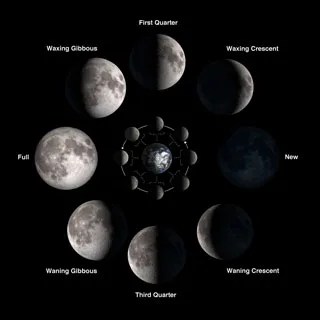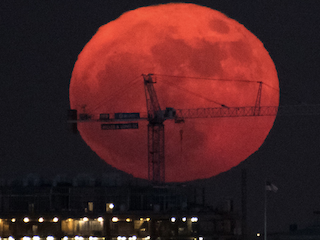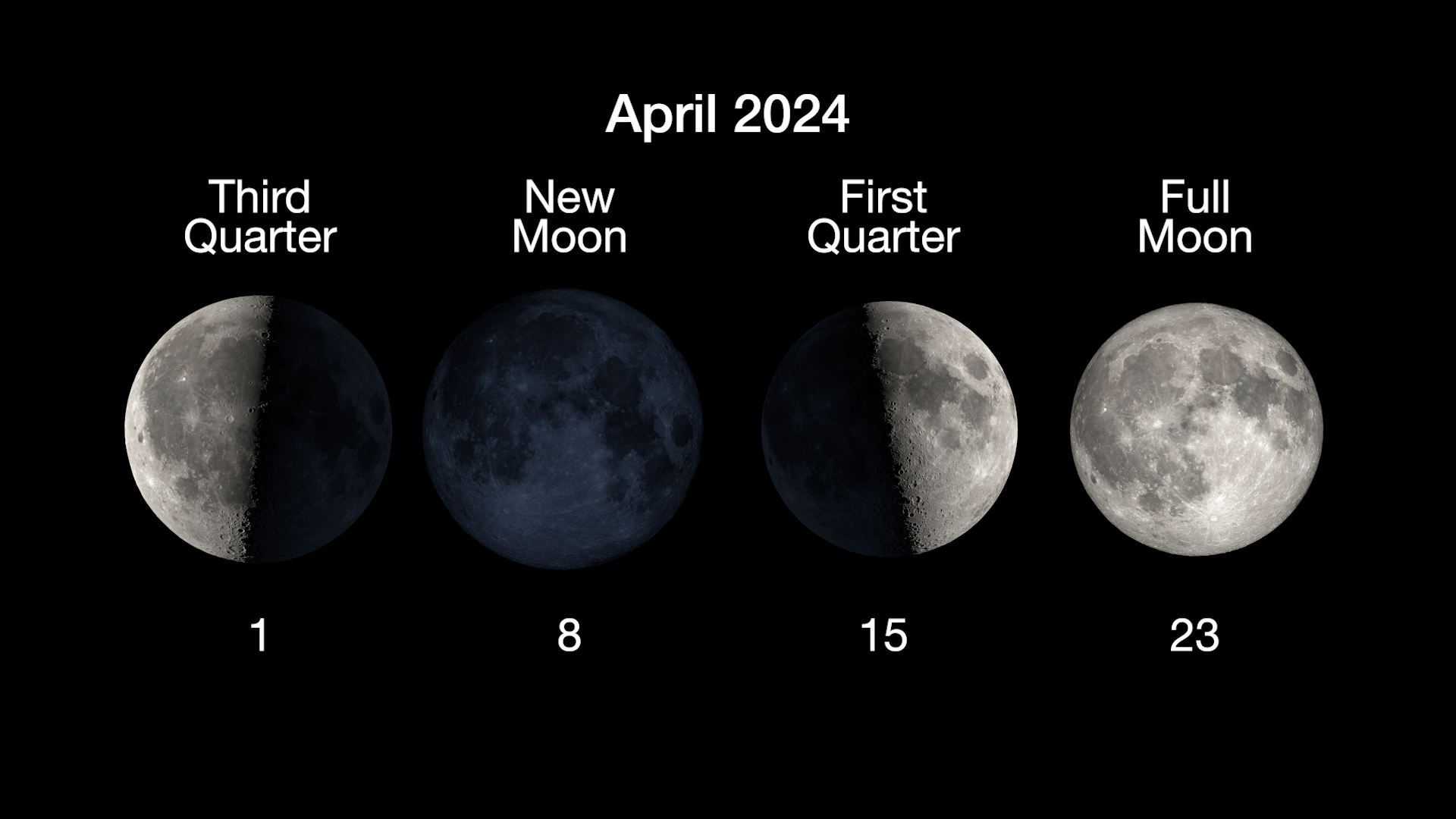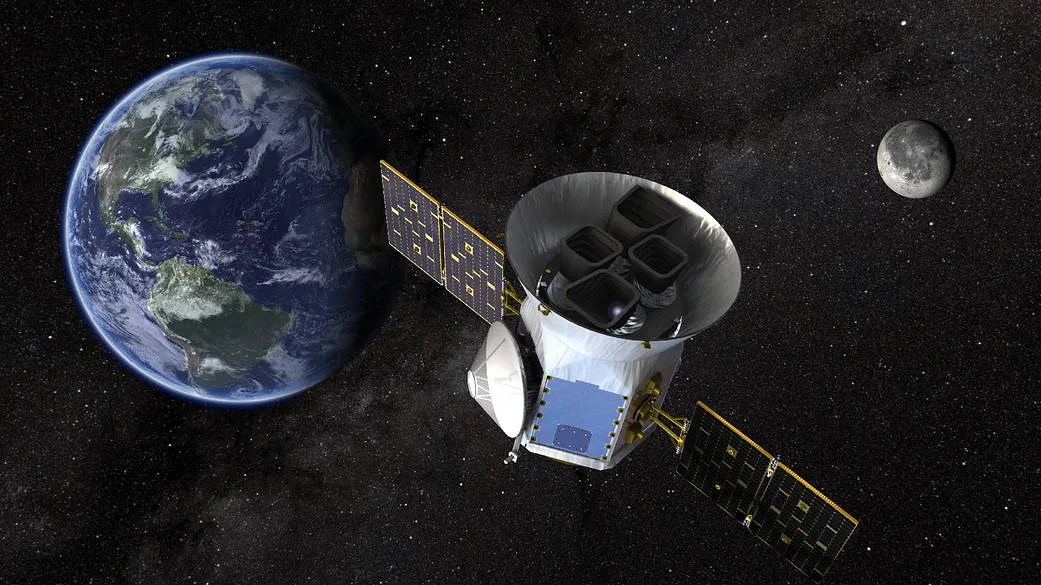17 min read
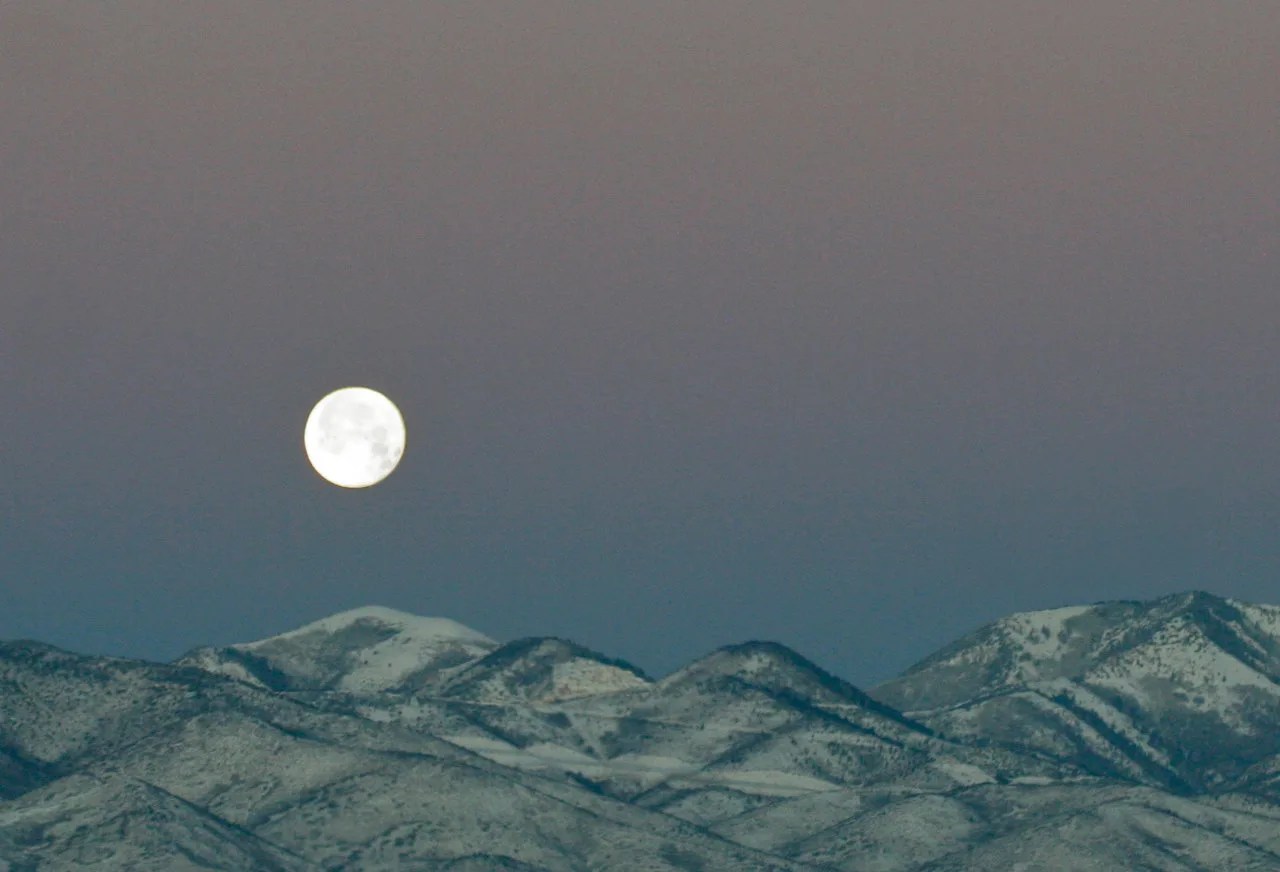
The Next Full Moon is the Flower Moon, Corn Planting Moon, Milk Moon, the Vesak Festival Moon and a supermoon.
The next full Moon will be on Thursday morning, May 7, 2020, appearing opposite the Sun (in Earth-based longitude) at 6:45 a.m. EDT. The Moon will appear full for about three days around this time, from Tuesday evening through Friday morning.
The Maine Farmer's Almanac first published "Indian" names for the full Moons in the 1930s. According to this almanac, as the full Moon in May and the second full Moon of spring, the Algonquin tribes of what is now the northeastern United States called this the Flower Moon, for the flowers that are abundant this time of year. Other names include the Corn Planting Moon and the Milk Moon.
This full Moon corresponds to Vesak, also known as Buddha Purnima, a holiday observed by Buddhists across Asia. Sometimes informally called "Buddha's Birthday," it commemorates the birth, enlightenment and death of Gautama Buddha. The actual date of Vesak varies depending upon the calendar in use in the particular country or region, but this year for most areas it falls on or near the day of this full Moon.
This is the last in a series of four supermoons. The term "supermoon" was coined by the astrologer Richard Nolle in 1979 and refers to either a new or full Moon that occurs within 90% of perigee, its closest approach to Earth in a given orbit. Under this definition, in a typical year there can be three or four full supermoons in a row and three or four new supermoons in a row. For 2020, the four full Moons from February through May meet this 90% threshold.
In most lunisolar calendars, the months change just after the new Moon, and full Moons fall in the middle of the lunar months. This full Moon is the middle of Iyar in the Hebrew calendar. Since 12 lunar cycles are about 11 days shorter than a solar year, lunisolar calendars add an extra month every few years to keep in sync with the seasons. This full Moon is the middle of the first of two "fourth" months of the Chinese calendar. In the Islamic calendar the months start with the first sighting of the waxing crescent Moon a few days after the New Moon. This full Moon is near the middle of the holy month of Ramadan, the month in which the Quran was revealed. Observing this annual month of charitable acts, prayer and fasting from dawn to sunset is one of the five pillars of Islam.
As usual, the wearing of suitably celebratory celestial attire is encouraged in honor of the full Moon.
As for other celestial events between now and the full Moon after next:
As spring continues, the daily periods of sunlight continue to lengthen, with the rate of change gradually decreasing as we approach the summer solstice. For the Washington, D.C. area, on the day of the full Moon (Thursday, May 7, 2020), the period of daylight will last 14 hours, 4 minutes. Morning twilight will begin at 4:58 a.m. EDT, sunrise will be at 6:03 a.m., the Sun will reach a maximum altitude of 68.2 degrees at 1:05 p.m., sunset will be at 8:07 p.m., and evening twilight will end at 9:12 p.m. By the full Moon after next (Friday, June 5, 2020), the period of daylight will be 43 minutes longer, lasting 14 hours, 47 minutes. Morning twilight will begin at 4:32 a.m. EDT, sunrise will be at 5:43 a.m., the Sun will reach a maximum altitude of 73.8 degrees at 1:07 p.m., sunset will be at 8:30 p.m., and evening twilight will end at 9:42 p.m.
On the evening of the full Moon on Thursday, May 7, 2020, as evening twilight ends (at 9:12 p.m. for the Washington, D.C. area), Venus, the brightest of the planets, will appear as the Evening Star about 19 degrees above the horizon in the west-northwest. None of the brightest stars will appear directly overhead; the nearest to overhead will be Regulus, appearing about 59 degrees above the south-southwestern horizon. As this lunar cycle progresses, Venus and the background of stars will appear to shift toward the west. Venus will dim as it moves closer to Earth but becomes more of a crescent (when viewed through a telescope). Venus was at its greatest brilliancy (a geometric approximation of its greatest brightness) on April 28, 2020. When Venus is near its brightest, if the weather is clear and you know where to look, you may be able to see it during the day.
After Friday, May 8, 2020, the planet Mercury will begin emerging from the glow of dusk on the west-northwestern horizon (depending upon viewing conditions) about 30 minutes after sunset. Mercury will begin appearing above the horizon at the time evening twilight ends around Saturday, May 16, 2020. Venus and Mercury will appear nearest to each other on Thursday evening, May 21, 2020, with Venus about 5 degrees above the horizon in the west-northwest and Mercury below Venus at about 4 degrees above the horizon. By Tuesday, May 26, 2020, Venus will have already set by the time evening twilight ends, but should remain bright enough to be visible about 30 minutes after sunset for the next few evenings. On Saturday, May 30, 2020, for the Washington, D.C. area (and similar latitudes, at least), Mercury will appear at its highest above the horizon as evening twilight ends (about 6.5 degrees in the west-northwest), after which it will appear to gradually shift closer to the horizon each evening. Venus will pass between Earth and the Sun on Wednesday, June 3, and will begin to emerge from the glow of dawn later in June. By the evening of the full Moon on Friday, June 5, 2020, as evening twilight ends (at 9:42 p.m. EDT for the Washington, D.C. area), the planet Mercury will appear about 6 degrees above the horizon in the west-northwest. The bright star appearing nearest to directly overhead will be Arcturus, appearing (for Washington, D.C. and similar latitudes) 68 degrees above the horizon in the south-southeast. Also near to directly overhead will be the constellation Ursa Major, also known as the Great Bear or the Big Dipper.
On the morning of the full Moon on Thursday, May 7, 2020, at the time morning twilight begins (at 4:58 a.m. EDT for the Washington, D.C. area), the three planets Jupiter, Saturn and Mars will appear in the southeastern sky. The brightest of the three, Jupiter, will appear in the south-southeast at about 28 degrees above the horizon. The dimmest of the three, Saturn, will appear about 5 degrees to the left of Jupiter. Mars, slightly brighter than Saturn, will appear in the southeast at about 22 degrees above the horizon. The bright star appearing nearly directly overhead will be Vega, one of the three stars in the "Summer Triangle." As the lunar cycle progresses, Jupiter, Saturn and the background of stars will appear to shift toward the west, while Mars will appear to shift more slowly.
On the morning of Tuesday, May 12, 2020, the waning gibbous Moon will appear below Jupiter. On the next morning the Moon will appear to the lower left of Saturn. The morning of Friday, May 15, the waning crescent Moon will appear to the lower left of Mars. Although Jupiter and Saturn will appear about 5 degrees apart throughout this lunar cycle, they will appear at their closest to each other the morning of Monday, May 18, 2020. By the morning of the full Moon on Friday, June 5, 2020, as morning twilight begins (at 4:32 a.m. for the Washington, D.C. area), Jupiter and Saturn will appear in the south, about 5 degrees apart (Jupiter on the right), at about 30 degrees above the horizon. Mars will appear in the southeast at about 29 degrees above the horizon. The bright star appearing closest to overhead (82 degrees above the northeastern horizon) will be Deneb, another of the three stars in the "Summer Triangle."
Two meteor showers are expected to peak in early May when the light of the nearly full Moon will interfere with visibility. (Since moonlight will interfere I'm not providing much information this year.)
In late December 2019, the Asteroid Terrestrial-impact Last Alert System (ATLAS) detected a comet that looked like it might put on a good show in May 2020. However, it appears Comet C/2019 Y4 (ATLAS) broke up in late March and now the pieces are not expected be visible without a telescope.
May 1 & 2, 2020
Friday, May 1, 2020, is May Day. We currently divide the year into four seasons based upon the solstices and equinoxes, with summer starting on the summer solstice in June. This approximates summer as the quarter of the year with the warmest temperatures. Much of pre-Christian northern Europe celebrated "cross-quarter days" halfway between the solstices and equinoxes, and divided the seasons on these days. Summer was the quarter of the year with days having the longest periods of daylight, starting on Beltane, traditionally celebrated on May 1st (the middle of our spring). The European May Day traditions appear to derive from earlier Beltane celebrations for the start of Summer.
On Friday evening into Saturday morning, May 1 to 2, 2020, the bright star Regulus will appear to the lower left of the waxing gibbous Moon. For the Washington, D.C. area, Regulus will set before the Moon on Saturday morning at about 3:16 a.m. EDT.
May 4, 2020
On Monday, May 4, 2020, the planet Mercury will be passing on the far side of the Sun as seen from Earth, called superior conjunction. Because Mercury orbits inside the orbit of Earth, Mercury will be shifting from the morning sky to the evening sky.
May 5 & 6, 2020
As mentioned above, the Eta-Aquariid meteor shower will peak around the early morning of Tuesday, May 5, 2020, but the light of the nearly full Moon will interfere, as the Moon will not set until after morning twilight begins.
Tuesday night, May 5, 2020, at 11:03 p.m. EDT, the Moon will be at perigee, its closest to Earth for this orbit.
Tuesday night into Wednesday morning, May 5 to 6, 2020, the bright star appearing to the lower right of the nearly full Moon will be Spica.
Even though they are not usually visible, I include in these Moon missives information about Near Earth Objects (mostly asteroids) that may pass Earth within 5 lunar distances, because I find it interesting that we have discovered so many. On Wednesday afternoon, May 6, 2020, at about 1:37 p.m. EDT (2020-May-06 17:37 UTC with 4 minutes uncertainty), Near Earth Object (2020 HL6), between 21 to 47 feet (6 and 14 meters) in size, will pass Earth at 2.1 lunar distances, traveling at 12,040 miles per hour (5.38 kilometers per second).
May 7, 2020
As mentioned above, the next full Moon will be on Thursday morning, May 7, 2020, at 6:45 a.m. EDT.
Sometime during the first half of May, 2020 (2020-May-07 11:45 UTC with 6 days, 15 hours, 1 minute uncertainty), Near Earth Object (2007 KV2), between 105 to 234 feet (32 and 71 meters) in size, will pass Earth at between 3.5 and 152.6 lunar distances (nominally 54.9), traveling at 18,920 miles per hour (8.46 kilometers per second).
On Thursday evening, May 7, 2020, at 5:49 p.m. EDT (2020-May-07 21:49 UTC), Near Earth Object (2016 HP6), between 76 to 170 feet (23 and 52 meters) in size, will pass Earth at 4.3 lunar distances, traveling at 12,801 miles per hour (5.72 kilometers per second).
May 8, 2020
After about Friday evening, May 8, 2020, the planet Mercury will begin emerging from the glow of dusk on the west-northwestern horizon (depending upon viewing conditions) about 30 minutes after sunset.
On Friday evening into Saturday morning, May 8 to 9, 2020, the bright star Antares will appear near the full Moon. For the Washington, D.C. area, the Moon will rise in the east-southeast Friday night at about 9:50 p.m. EDT, with Antares rising to the right of the Moon about 10 minutes later. Antares will appear to the lower right of the Moon when they reach their highest in the sky for the night, at about 2:50 a.m. Saturday morning. Morning twilight will begin at about 4:55 a.m.
May 9, 2020
On Saturday morning, May 9, 2020, at about 6:55 a.m. EDT (2020-May-09 10:55 UTC with 10 minutes uncertainty), Near Earth Object (2020 HC6), between 87 to 195 feet (27 and 59 meters) in size, will pass Earth at 2.9 lunar distances, traveling at 13,530 miles per hour (6.05 kilometers per second).
May 12, 2020
Tuesday morning, May 12, 2020, the planets Jupiter and Saturn will appear to the upper left of the waning gibbous Moon. For the Washington, D.C. area, Jupiter will rise first in the east-southeast at 12:52 a.m. EDT, with the Moon rising to the right of Jupiter at 12:55 a.m. and Saturn rising to the left of Jupiter at 1:08 a.m. They will appear to the south-southeast by the time morning twilight begins around 4:52 a.m.
May 13, 2020
Wednesday morning, May 13, 2020, the Moon will appear to have shifted so that it will be to the lower left of Saturn. For the Washington, D.C. area, the Moon will rise in the east-southeast at 1:40 a.m. EDT and morning twilight will begin around 4:50 a.m.
May 14, 2020
On Thursday morning, May 14, 2020, the waning Moon will appear half-full as it reaches its last quarter at 10:03 a.m. EDT.
May 15, 2020
On Friday morning, May 15, 2020, the planet Mars will appear above the waning crescent Moon. For the Washington, D.C. area, the Moon will rise in the east-southeast at about 2:50 a.m. EDT and morning twilight will begin around 4:48 a.m.
May 16, 2020
On Saturday evening, May 16, 2020, the planet Mercury will begin appearing above the horizon at the time evening twilight ends.
May 18, 2020
On Monday morning, May 18, 2020, the planets Jupiter and Saturn will appear nearest to each other for this apparition, less than 5 degrees apart. For the Washington, D.C. area, Saturn will rise second in the east-southeast at 12:44 a.m. EDT, with bright Jupiter to the upper right of Saturn. They will appear about 30 degrees above the horizon in the south-southeast as morning twilight begins at around 4:45 a.m.
Monday morning, May 18, 2020, at 3:45 a.m. EDT, the Moon will be at apogee, its farthest from the Earth for this orbit.
Sometime the week of Wednesday, May 20, 2020 (2020-May-20 10:13 UTC with 3 days, 13 hours, 6 minutes uncertainty), Near Earth Object (2015 KW121), between 53 to 117 feet (16 and 36 meters) in size, will pass Earth at between 0.7 and 64.0 lunar distances (nominally 27.1), traveling at 43,620 miles per hour (19.50 kilometers per second).
May 21 & 22, 2020
On Thursday evening, May 21, and again on Friday evening, May 22, 2020, the planets Venus and Mercury will appear near each other low on the west-northwestern horizon. To see them, you will need to look close to when evening twilight ends and have a clear view of the horizon from the west-northwest to the northwest. On Thursday evening, Mercury will appear to the lower left of bright Venus about 4 degrees above the horizon at the time evening twilight ends (at 9:28 p.m. EDT for the Washington, D.C. area). Mercury will set first about 27 minutes later.
Friday, May 22, 2020, at 1:39 p.m. EDT, will be the new Moon, when the Moon passes between the Earth and the Sun and will not be visible from the Earth.
On Friday evening, May 22, 2020, bright Venus will have shifted to appear to the lower right of Mercury, appearing about 4 degrees above the horizon at the time evening twilight ends (at 9:29 p.m. EDT for the Washington, D.C. area). Venus will set first about 26 minutes later.
May 23, 2020
The day of, or the day after, the New Moon marks the start of the new month for most lunisolar calendars. Sundown on Saturday May 23, 2020, marks the start of Sivan in the Hebrew calendar. In order to keep the lunar months in sync with the solar year, the Chinese lunisolar calendar repeats months when necessary. This year, the Chinese calendar repeats the fourth month of the year. This second or "leap" fourth month starts on May 23, 2020 (at midnight in China's time zone, which is 12 hours ahead of EDT).
In the Islamic calendar the months start with the first sighting of the waxing crescent Moon. Sundown on Saturday, May 23, 2020, will probably mark the end of Ramadan and the beginning of Shawwal. The end of Ramadan, the holy month of fasting, is Eid al-Fitr, the festival of breaking the fast, a major Islamic celebration.
On Saturday evening, May 23, 2020, if you have a clear view of the horizon toward the west-northwest, you may be able to see the thin waxing crescent Moon below the planets Venus and Mercury. You will need a very clear view to the horizon and to look while dusk is still in the sky. For the Washington, D.C. area, you will need to look before the Moon sets at 9:26 p.m. EDT. Evening twilight will end 4 minutes later at 9:30 p.m., Venus will set at 9:48 p.m., and Mercury will set at 10:03 p.m.
May 24, 2020
By Sunday evening, May 24, 2020, the Moon will have shifted higher in the sky and Venus will have shifted closer to the horizon. The Moon, Mercury and Venus will form a rough line from the waxing crescent Moon on the upper left through Mercury to bright Venus on the lower right. Again, you will need a clear view of the horizon in the west-northwest. For the Washington, D.C. area, evening twilight will end at 9:31 p.m. EDT, with Venus about 1.5 degrees above the horizon, Mercury about 5 degrees above the horizon, and the Moon about 8 degrees above the horizon. Venus will set at 9:42 p.m., Mercury at 10:06 p.m., and the Moon at 10:25 p.m.
May 26, 2020
On Tuesday evening, May 26, 2020, the bright star appearing to the right of the waxing crescent Moon will be Pollux, the brighter of the twin stars in the constellation Gemini, the twins.
After Tuesday evening, May 26, 2020, the planet Venus will begin setting before evening twilight ends. Venus should remain bright enough to be visible after for 30 minutes after sunset for the next few evenings.
May 28 & 29, 2020
On Thursday evening into early Friday morning, May 28 to 29, 2020, the bright star Regulus will appear to the left of the waxing crescent Moon. For the Washington, D.C. area, Regulus will set around 1:30 a.m. Friday morning, about 5 minutes before moonset. (They will actually appear at their closest Thursday morning when we can't see them from our hemisphere.)
By Friday evening, May 29, 2020, the half-full Moon will appear to have shifted to the upper left of the bright star Regulus, and they will appear to separate as the evening progresses. The Moon will reach its first quarter at 11:30 p.m. EDT.
May 30, 2020
For the Washington, D.C. area (and similar latitudes, at least), Mercury will appear at its highest above the horizon as evening twilight ends (about 6.5 degrees in the west-northwest) on Saturday evening, May 30, 2020, after which it will appear to gradually shift closer to the horizon each evening. Mercury will reach its greatest angular separation from the Sun as seen from Earth a few days later on June 4, 2020.
June 1 & 2, 2020
On Monday evening into early Tuesday morning, June 1 to 2, 2020, the bright star appearing below the waxing gibbous Moon will be Spica. The Moon will be near its highest in the sky for the night just after evening twilight ends. For the Washington, D.C. area, Spica will set around 3:15 a.m. EDT Tuesday morning, with the Moon setting about 30 minutes later.
Tuesday evening, June 2, 2020, at 11:39 p.m. EDT, the Moon will be at perigee, its closest to Earth for this orbit.
June 3, 2020
On Wednesday afternoon, June 3, 2020, the planet Venus will pass between Earth and the Sun, called inferior conjunction. Planets that orbit inside the orbit of Earth can have two types of conjunctions with the Sun: inferior (when passing between Earth and the Sun) and superior (when passing on the far side of the Sun as seen from Earth). Venus will be shifting from the evening sky to the morning sky and should begin emerging from the glow of dawn on the eastern horizon after about June 10, 2020 (depending upon viewing conditions).
June 4 & 5, 2020
Thursday evening into Friday morning, June 4 to 5, 2020, the bright star appearing below the full Moon will be Antares. For the Washington, D.C. area, as evening twilight ends, the Moon will appear about 20 degrees above the horizon in the southeast, with Antares about 8 degrees below the Moon. The Moon will reach its highest in the sky for the night early Friday morning at 12:33 a.m. EDT, and morning twilight will begin at 4:32 a.m.
The full Moon after next will be on Friday afternoon, June 5, 2020, with the Moon appearing opposite the Sun in Earth-based longitude at 3:12 p.m. EDT.
What causes the phases of the Moon?
Why does the Moon sometimes look so big on the horizon?

